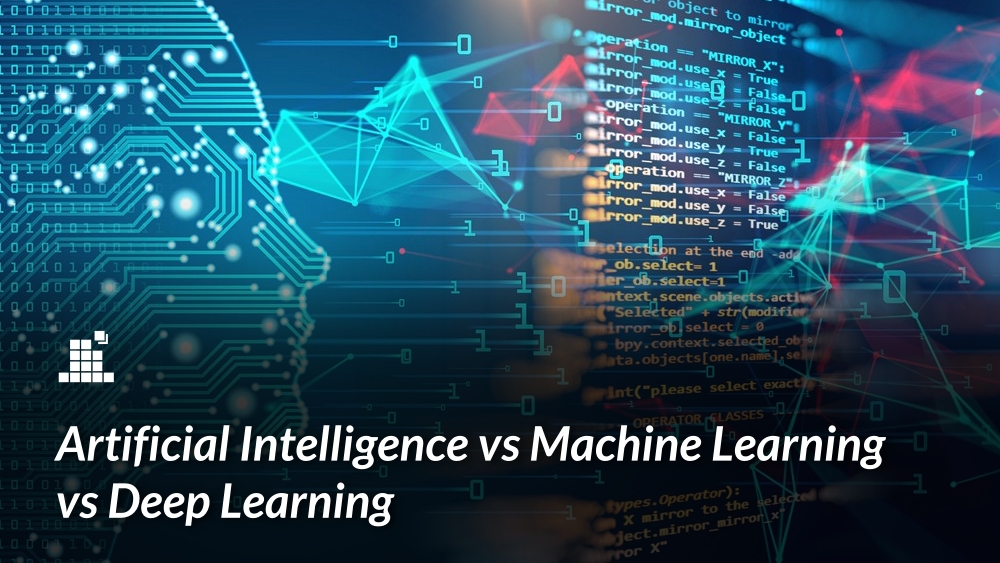We have heard the terms Artificial Intelligence(AI), Machine Learning(ML) vs Deep Learning(DL) together but they convey different meanings.
We have discussed below how these topics are different and what they are actually:
Artificial Intelligence:
When we talk about AI, we might think of applications like object identification, self-driving cars, movie recommendations which are actually taken from machine learning and deep learning. Well, this statement isn’t contradicting since DL and ML are subsets of AI. ML and DL are methods to achieve Artificial intelligence. The basic definition of AI is when a computer system is able to perform functions like the human brain.
The most advanced AI system till now is SOPHIA which is a human-like robot capable to answer intellectual conversations and perform other tasks just how a human being would do, well not like the movie terminator. AI is the future which can help to make the world a better place.
A system is known as an AI system if and only if it passes the Turing test as stated by Alan Turing which was based on a test through which an individual has to compare the machine and human outcomes for a particular test. If the machine and human output are indistinguishable then the machine is termed as an artificially intelligent system.
Machine Learning:
Machine learning is a topic which falls directly under AI. Machine learning as the term specifies empowers the machine to learn how to make decisions. Provided some data the machine identifies patterns in the data and predicts results for the test data aka unseen data.
The data which is fed to the machine learning algorithm is known as training data as the machine learns from this data. Machine learning can be sub-categorised further in the following 3 ways:
Supervised learning:
When the data has a target, the variable defined for which we train our model it falls under supervised learning. This can either be a regression or a classification task in which we predict the value of the target or label.
Some examples are: Predicting stock prices, predicting house prices, etc.
Unsupervised learning:
When there is no target variable and we need to find patterns in the data. We can use clustering algorithms to train unsupervised models to group data into different categories based on their distributions and attributes.
Some examples are: identifying different varieties of fruits by using clustering algorithms.
Reinforcement learning:
When the model learns from the interactions with the environment it falls under reinforcement learning. If the model takes the correct path then it is awarded and if it takes a wrong decision it is penalised. This process is similar to how a dog trainer can reward the pet when it does the given task correctly.
Example: Playing a game using machine learning.
Problems like fraud detection, movie recommendations can be solved via Machine learning. ML is widely used by big companies like YouTube, Netflix, banks, etc to make their businesses more productive.
Deep Learning:
Deep learning is further a domain that comes under ML, that is the innermost core of the discussed topics. It is inspired by the working of the human brain. A human brain has a vast number of neurons which are interconnected to share information, similarly, a deep learning algorithm consists of many neurons interconnected to form a neural network. A neural network can have a certain number of layers which are used to classify data into categories the same way as our brain processes information. The layers of a neural network are divided into 3 types –
The input layer, hidden layer and output layer which helps it to make decisions. The difference in Machine learning and deep learning is that machine learning models need human guidance in case of an inaccurate prediction made by the model, the programmer needs to examine the origin of the problem manually and fix it, while in Deep learning, the model does it by himself. Many Deep learning algorithms like Artificial Neural Networks, Convolutional Neural Networks, Recurrent Neural Networks have proved to be highly efficient when trained over huge datasets.
Though deep learning is very effective, everything comes with a cost, so is with deep learning as it needs high-end hardware and has large execution time which can go up to weeks as well as a neural network works as a black box. So, if you want to extract insights from the data may be then machine learning might help you better here because with deep learning interpretability is difficult or impossible at times. Some applications of deep learning include – object detection, face identification, image classification, improving image quality, colouring black and white photos and much more fascinating inventions are made in the field of deep learning!
Suggested Course : Machine Learning
Improve your career by taking our machine learning courses. Learn More
